Search

Containers play a crucial role in global logistics, particularly in air and sea freight. Depending on the transport requirements and method, different types of containers with various dimensions, weights, and design features are available. This page provides a clear overview of the most common container dimensions and sizes to help you select the right one.
Sea freight containers come in a variety of sizes and designs to meet the diverse needs of international freight transport. The most common types are outlined below. These are approximate values.
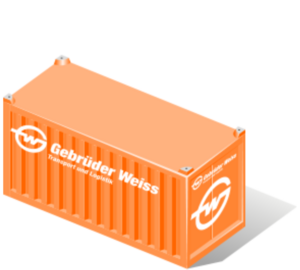
20’ or 40’ box container
Note the door height (generally 7.38 ft, occasionally only 6.89 ft), suitable for normal loading
approx. internal dimensions (l x w x h):
20’ = 19.36 x 7.71 x 7.71 ft = 1,151.05 ft³
40’ = 39.37 x 7.71 x 7.71 ft = 2,340.29 ft³
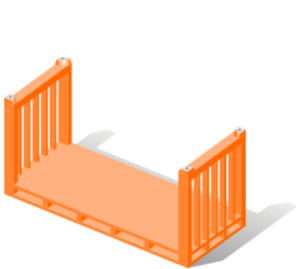
20’ or 40’ flat rack
Especially for bulky or abnormally wide loads
approx. dimensions (l x w x h):
20’ = 19.36 x 7.87 x 7.38 ft
40’ = 39.37 x 7.87 x 7.38 ft
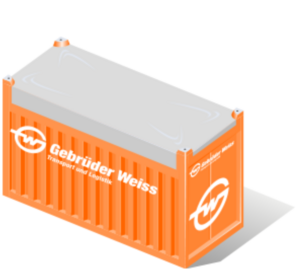
20’ or 40’ open top container
With detachable tarpaulin, especially for high loads; loading can be done from above
approx. internal dimensions (l x w x h):
20’ = 19.36 x 7.71 x 7.71 ft = 1,151.05 ft³
40’ = 39.37 x 7.71 x 7.71 ft = 2,340.29 ft³
in gauge = open top, without overheight
out of gauge = open top, with overheight
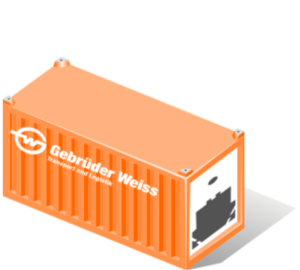
20’ or 40’ refrigerated container
Especially for temperature-sensitive goods
approx. internal dimensions (l x w x h):
20’ = 17.88 x 7.41 x 7.38 ft = 978.3 ft³
40’ = 37.89 x 7.45 x 7.22 ft = 2,041.4 ft³
approx. door height (w x h):
20’ = 7.41 ft x 7.22 ft
40’ = 7.45 ft x 7.12 ft
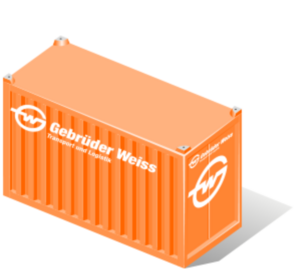
40’ high cube container
Especially for light and bulky goods
approx. internal dimensions (l x w x h):
40’ = 39.37 x 7.71 x 8.83 ft = 2,678.6 ft³
approx. door height (w x h):
40' = 7.68 ft x 8.50 ft
All airlines use standardized loading equipment for wide-body jets, including air freight pallets and containers. Some airlines offer their own specialized containers for transporting items such as hanging clothes, chilled goods, and live animals. The most common sizes are listed below:
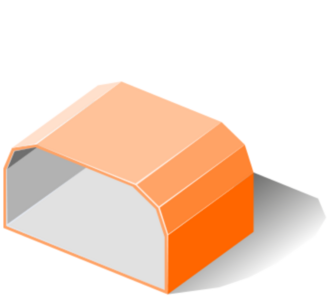
LD 7 container
approx. internal dimensions (l x w x h):
120.5 x 78.7 x 60.2 in

LD 3 container
approx. internal dimensions (l x w x h):
57.5 x 56.7 x 63 in
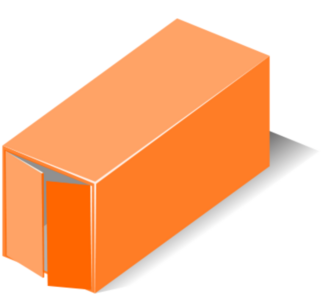
LD 9 refrigerated container
approx. internal dimensions (l x w x h):
119.3 x 82.7 x 57.1 in

AKH container
approx. internal dimensions (l x w x h):
57.5 x 56.7 x 43.7 in

AMJ container
approx. internal dimensions (l x w x h):
118.1 x 89.8 x 94.5 in
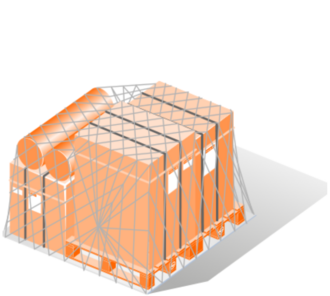
10 ft. pallet (PMC)
approx. basic dimensions (l x w):
125.2 x 96.1 in
approx. internal dimensions (l x w):
119.7 x 90.6 in
If you are planning an international container shipment, there are other important questions to consider besides choosing the right dimensions for your shipping container.
Our experts will be happy to advise you on these and other important topics. Simply reach out to one of our global Air & Sea locations or submit a transport request.
The principle of assembly line production is essentially applied to transportation in the case of containers. The key factor here is standardization; standardized containers can be used for multiple modes of transport. Container size is based on the requirements of road, rail, or sea transport.
The standard sizes for sea freight are the 20’ and 40’ containers.
Depending on your requirements, various other options are also available, such as flat racks, open-top containers, refrigerated containers, high-cube containers, bulk containers and tank containers.
In the case of less-than-container-load (LCL) shipments, the volume and/or weight of the individual shipments is too small to fill a complete container. Therefore several LCL shipments (from different senders with the same port of destination) are loaded together into one container at the port of shipment (groupage container).
FCL shipments (full container load) are loaded when:
There are several standard sizes of air freight containers designed specifically for use in wide-body aircraft. Some of the most common sizes are listed below.
ULD stands for "unit load device." ULD pallets and containers are specially designed for use in aircraft and are securely fastened in the cargo hold. They come in various sizes and shapes to accommodate different cargo needs.
These are internationally standardized units used to count ISO containers, describe the loading capacity of ships, and handle terminals in container transport.
TEU stands for twenty-foot equivalent unit, or 20-foot container unit. FEU stands for forty-foot equivalent unit (40-foot container unit).
For oversized cargo, such as generators, machine parts, and bulky vehicles, there is an option to transport them in special containers. This allows oversized cargo to be delivered to destinations around the world while maintaining the flexibility of traditional container transportation. The Gebrüder Weiss Projects & Break Bulk Department is available to consult with you.

As a global full-service logistics provider, Gebrüder Weiss is a reliable partner for air freight and sea freight. We handle your shipments quickly and efficiently via any desired air or sea port worldwide. Your advantages:
We are also happy to advise you on local requirements and assist you in obtaining the necessary documents. Whatever you need, we offer secure, flexible, and reliable solutions.